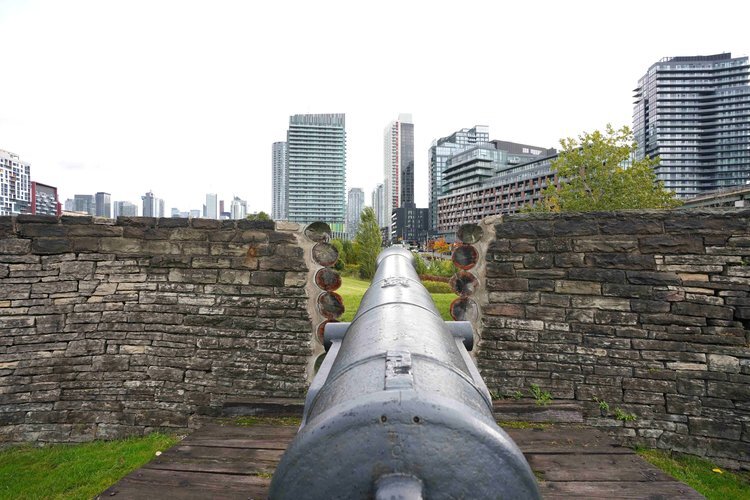Fort York
Fort York, Toronto
Fort York and the War of 1812
On June 17th, 1812 the U.S. Senate voted to approve a resolution declaring war on the British Empire by a 19 to 13 margin.
You can view the Senate’s approval of the resolution declaring war on the British Empire here.
The House of Representatives had already voted to approve war against the British Empire by a margin of 79 to 49.
President Madison signed the bill into law on June 18, 1812, marking the start of the War of 1812.
This declaration of war was the first in American history.
(To learn more about the legal mechanisms by which the U.S. government declares war, see here).
The declaration of war was prompted by a desire among some American policy-makers to annex British Canada, frustration with European trade blockades, the British Empire’s alliance with indigenous peoples locked in a bloody battle for survival with an America expanding westward, and British harassment of U.S. vessels in the Atlantic.
(Learn the full backstory here.)
The war did not involve a U.S. campaign against the island of Britain, located across the Atlantic.
Rather the offensive portion of America’s military campaign was directed against the British Empire’s dominion along the United States’ northern border: present-day Canada.
This offensive would result in the temporary capture of York (present-day Toronto).
On April 27, 1813, the United States launched an overwhelming ground and naval campaign (via Lake Ontario) on Fort York, which today sits just a few minutes drive west of Toronto’s downtown business district.
The ensuing battle is now known as the Battle of York.
The war did not involve a U.S. campaign against the island of Britain, located across the Atlantic.
Rather the offensive portion of America’s military campaign was directed against the British Empire’s dominion along the United States’ northern border: present-day Canada.
This offensive would result in the temporary capture of York (present-day Toronto).
On April 27, 1813, the United States launched an overwhelming ground and naval campaign (via Lake Ontario) on Fort York, which today sits just a few minutes drive west of Toronto’s downtown business district.
The ensuing battle is now known as the Battle of York
Fort York, Toronto
The American naval campaign against York was conducted via Lake Ontario. Video: Lake Ontario and the Toronto Islands.
The fort fell under American control as the outnumbered British and indigenous troops stationed there retreated and, for six days, the American flag flew over York.
The occupying American forces proceeded to pillage York and burn buildings used by Ontario government officials (these buildings do not exist today).
The British Empire would later retaliate by occupying Washington, D.C. and torching the White House.
The war ended in 1814 with the conclusion of the Treaty of Ghent (agreed in Ghent, located in present-day Belgium).
The Treaty required that all territories captured during the war be returned.
Written By: Aiden Singh Published: July 10, 2020

